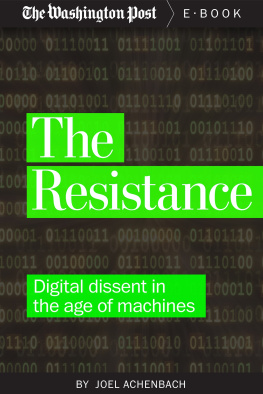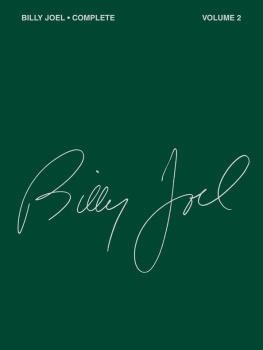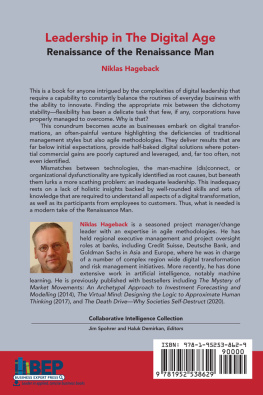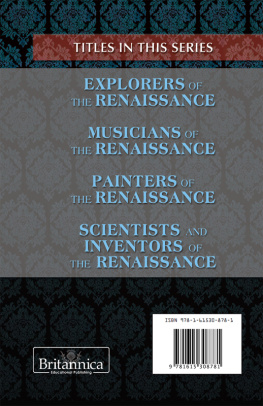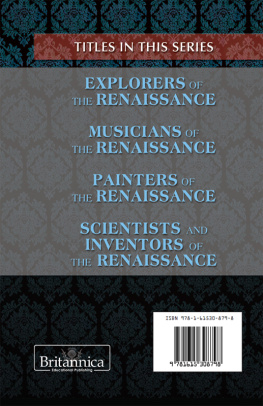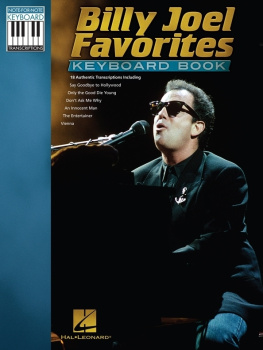Joel Waldfogel - Digital Renaissance
Here you can read online Joel Waldfogel - Digital Renaissance full text of the book (entire story) in english for free. Download pdf and epub, get meaning, cover and reviews about this ebook. year: 2018, publisher: Princeton University Press, genre: Politics. Description of the work, (preface) as well as reviews are available. Best literature library LitArk.com created for fans of good reading and offers a wide selection of genres:
Romance novel
Science fiction
Adventure
Detective
Science
History
Home and family
Prose
Art
Politics
Computer
Non-fiction
Religion
Business
Children
Humor
Choose a favorite category and find really read worthwhile books. Enjoy immersion in the world of imagination, feel the emotions of the characters or learn something new for yourself, make an fascinating discovery.

- Book:Digital Renaissance
- Author:
- Publisher:Princeton University Press
- Genre:
- Year:2018
- Rating:5 / 5
- Favourites:Add to favourites
- Your mark:
- 100
- 1
- 2
- 3
- 4
- 5
Digital Renaissance: summary, description and annotation
We offer to read an annotation, description, summary or preface (depends on what the author of the book "Digital Renaissance" wrote himself). If you haven't found the necessary information about the book — write in the comments, we will try to find it.
Digital Renaissance — read online for free the complete book (whole text) full work
Below is the text of the book, divided by pages. System saving the place of the last page read, allows you to conveniently read the book "Digital Renaissance" online for free, without having to search again every time where you left off. Put a bookmark, and you can go to the page where you finished reading at any time.
Font size:
Interval:
Bookmark:
Digital Renaissance
What Data and Economics Tell Us about the Future of Popular Culture
Joel Waldfogel
PRINCETON UNIVERSITY PRESS
PRINCETON AND OXFORD
Copyright 2018 by Princeton University Press
Published by Princeton University Press
41 William Street, Princeton, New Jersey 08540
6 Oxford Street, Woodstock, Oxfordshire OX20 1TR
press.princeton.edu
All Rights Reserved
LCCN 2018936672
ISBN 978-0-691-16282-9
British Library Cataloging-in-Publication Data is available
Editorial: Joe Jackson and Samantha Nader
Production Editorial: Debbie Tegarden
Jacket design: Michel Vrana
Jacket art: courtesy of iStock
Production: Jacquie Poirier
Publicity: James Schneider
This book has been composed in Din Pro and Adobe Text Pro
Printed in the United States of America
10987654321
This book is dedicated to my parents,
Melvin and Gertrude Waldfogel.
While nobody knows anything,
I think they might have liked it.
CONTENTS
ix
ACKNOWLEDGMENTS
This book is the product of a dozen years of work with various collaborators, including Luis Aguiar, Mary Benner, Fernando Ferreira, Imke Reimers, Ben Shiller, and Rahul Telang. I am grateful to them for sharing various journeys of exploration with me.
The National Bureau of Economic Researchs Digitization Program, and particularly Shane Greenstein, have provided me with invaluable support by convening a community of scholars interested in the topic of this book. Ive learned much from the lively feedback of that community.
I am grateful to the Institute for Prospective Technological Studies of the European Commission, and in particular to Bertin Martens, for bringing me into a conversation about copyright in Europe, sponsoring numerous research trips to Seville, and granting me access to data.
I thank my siblings, whose experiences with digitization have taught me a great deal, both directly and through osmosis. My brother Asher was an early developer of Internet communications technology, and my sister Sabra used self-publishing to launch a successful career as a novelist.
I have benefited greatly from the input of Steven Rigolosi, who has served as a sounding board and editor.
Finally, I am grateful to my immediate family, for both general support and for comments on early drafts of the book. My wife, Mary Benner, is both a supportive spouse and one of the research collaborators listed above. My children, Hannah and Sarah, now young adults, have introduced me to new technologies and to many of the new songs, movies, and television shows that are the fruits of the digital renaissance.
The Creative Industries
RISKY, EXPENSIVE, AND WORTH PRESERVING
Introduction
Think about Breaking Bad and Orange Is the New Black. About the novels of John Grisham, Scott Turow, Mary Higgins Clark, and Jane Smiley. About Taylor Swift, Radiohead, and Mumford & Sons. About the latest in the Jason Bourne and Star Wars franchises. Chances are youve spent many pleasurable hours immersed in their worlds.
Across most of the planet, we spend about a third of our waking hours watching television and movies, listening to music, or reading. Americans spend on average 6.15 hours per day consuming cultural products: film, TV shows, books, and music. Brazilians spend 6 hours, Poles spend 5.7, Germans spend 5.25, and the French spend 5.05.
In addition to substantial amounts of both entertainment and great artLee Child, Stieg Larsson, and Nora Roberts, but also Yann Martel, Joyce Carol Oates, and Michael Chabon; Britney Spears and Justin Timberlake, but also Bob Dylan, Janis Joplin, Aretha Franklin, and Radiohead. Titanic and Avatar , but also The Godfather and Schindlers List cultural industries foster enormous economic benefits.
The movie, music, book, and television industries together account for about one-twentieth of the worlds income.
The good news: The creative industriestelevision, books, music, and moviesare among the jewels of the U.S. economy. The possibly distressing news: Digital innovations, including piracy, online streaming, and self-publishing, have turned these industries upside down, threatening both commerce and art in two distinct ways. First, because new technologies deprive the creative industries of revenue, they potentially undermine their ability to invest in new movies, music, and books. Second, perhaps paradoxically, new, inexpensive technologies make it possible for many creators to produce and distribute their work without the curation, permission, nurture, or investment from a traditional gatekeeper, such as a recording label, publishing house, or movie studio. So we face the twin threats of no new investment in products and lots of new products delivered without costly adult supervision, all of which raises the question: Are we living through cultural Dark Ages, as some critics have argued, or through a digital renaissance?
The goal of the book is to answer that question with systematic empirical evidence.
Risky and Expensive
Understanding how the cultural industries have traditionally worked makes clear the threats delivered by new technologies. How do the creative industries generate commercial and sometimes artistic
The film industry spends even more money. It costs a major Hollywood studio more than $100 million, on average, to produce a movie intended for widespread theatrical release. The biggest-budget movies cost far more: The Lone Ranger (2013) cost $275 million. Pirates of the Caribbean: At Worlds End (2007) cost $300 million, as did Spectre (2015), an entry in the James Bond franchise. Star Wars, Episode VII: The Force Awakens (2015) cost $306 million. Avatar , released in 2009, cost $425 million.
But there are no guarantees in Hollywood. Its very hard to predict which films will turn into profitable products or franchises. Avatar earned $2.8 billion at the international box office, and The Force Awakens earned $2.1 billion, far more than their production budgets. Meanwhile, The Lone Ranger earned only about $260 million, worldwide, less than its production costs, and was a big money loser for its studio.
Goldmans Law: Nobody Knows Anything
Screenwriter William Goldman ( Butch Cassidy and the Sundance Kid , All the Presidents Men , The Princess Bride ) famously wrote that nobody knows anything about which movies will find favor with audiences.must generate enough revenue to cover the costs of their successes and their failures.
To bring creative works to market, the commercial patrons of the artsthe record labels, movie studios, book publishers, and television networksengage in two essential activities. First, they screen potential projects and decide to invest in only a tiny fraction of them. Second, they invest large sums in nurturing artists and the works they produce. Consider the music industry. Because the commercial prospects of most albums and artists are not readily apparent, success often requires patience and long-term vision. Most albums do not break even financially, and those that do take time to do so. Relationships between artists and labels transcend the financial. Rather, labels nurture artists, allowing them to develop their sound, their craft, and their careers.
Some examples of creative nurture by commercial intermediaries are legendary. An editor at the famous Scribners publishing house, Maxwell Perkins, discovered F. Scott Fitzgerald and Ernest Hemingway. Perkins is said to have found his greatest editorial challenge in Thomas Wolfe, whose impressive page output was matched by his attachment to all of his sentences. Perkins struggled to get Wolfe to cut almost 100,000 words from Look Homeward, Angel .
Next pageFont size:
Interval:
Bookmark:
Similar books «Digital Renaissance»
Look at similar books to Digital Renaissance. We have selected literature similar in name and meaning in the hope of providing readers with more options to find new, interesting, not yet read works.
Discussion, reviews of the book Digital Renaissance and just readers' own opinions. Leave your comments, write what you think about the work, its meaning or the main characters. Specify what exactly you liked and what you didn't like, and why you think so.

